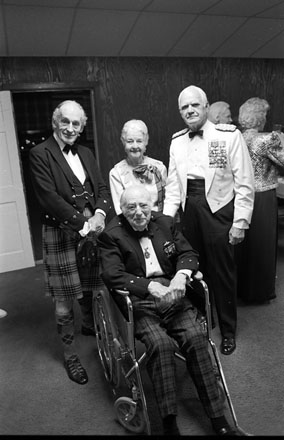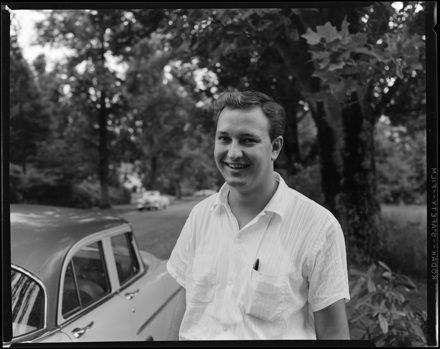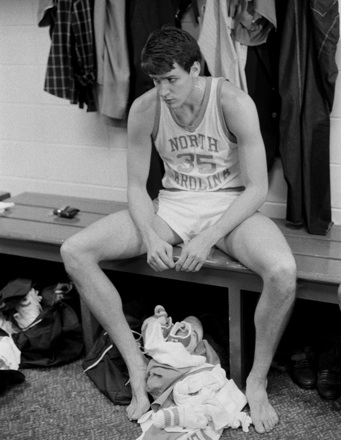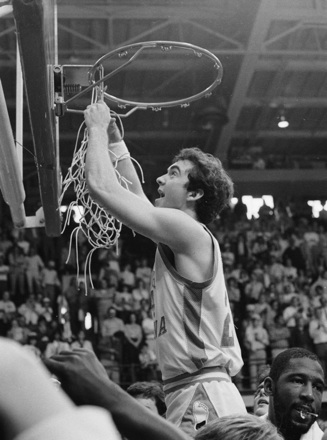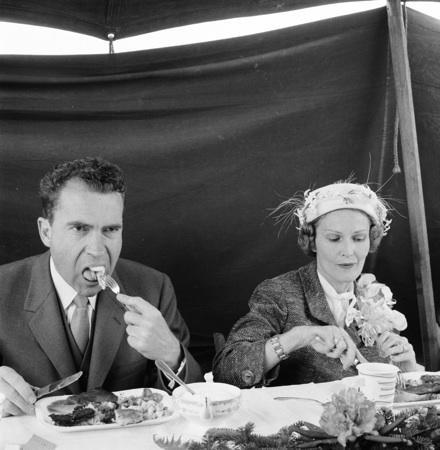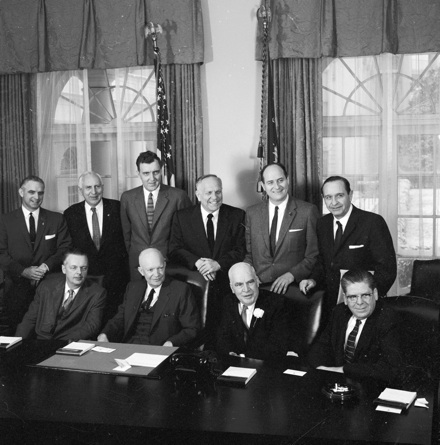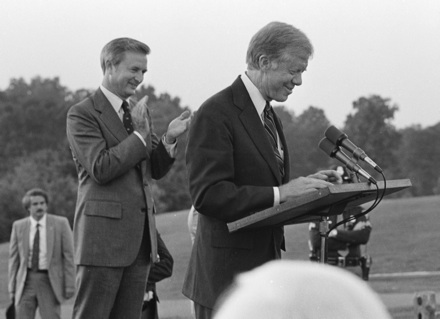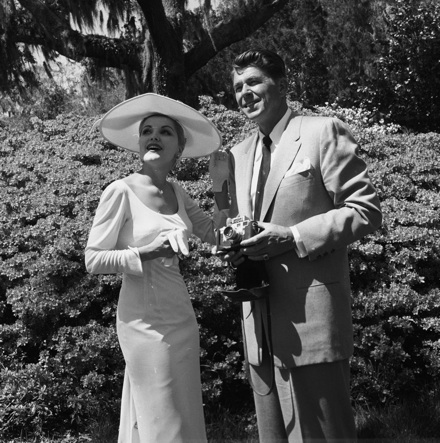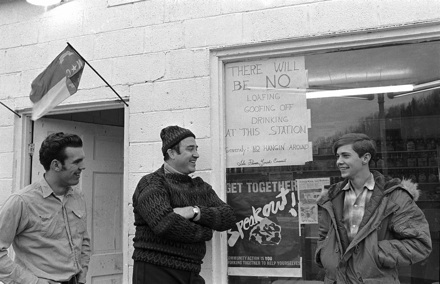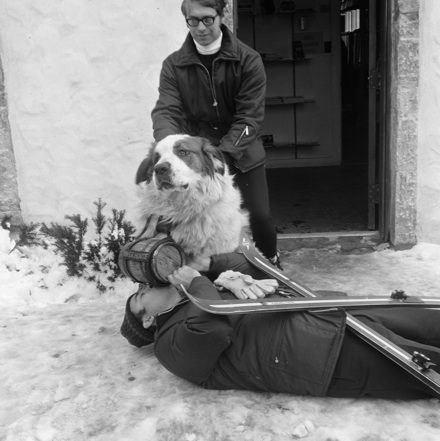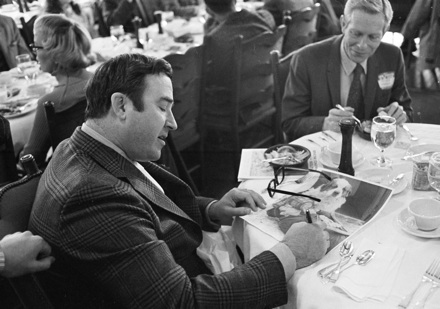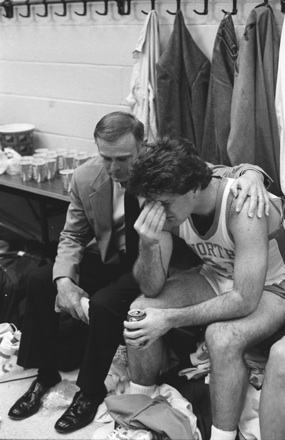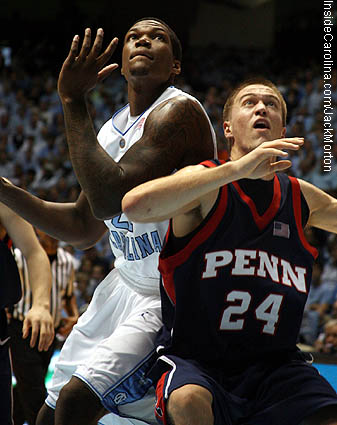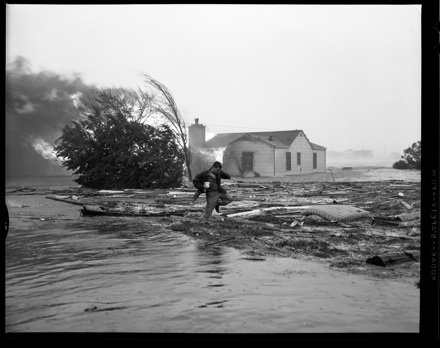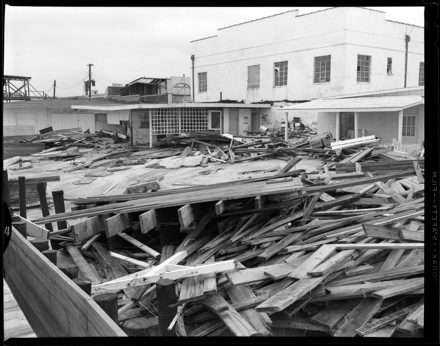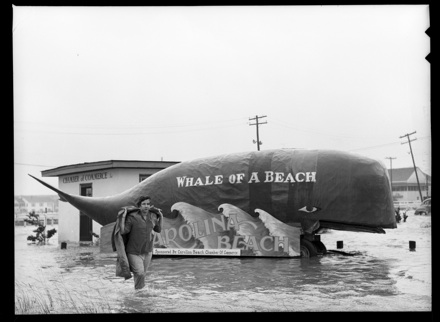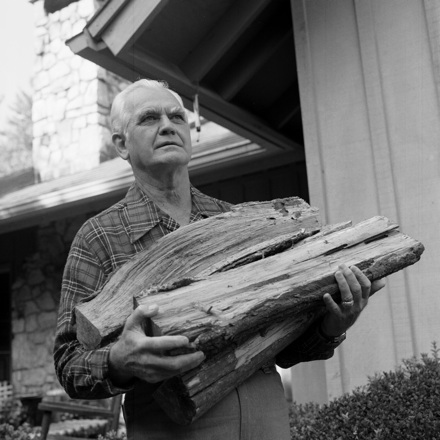
Hugh Morton cultivated many relationships in his various roles as photographer, publicist, land developer, and civic pillar. He became friends with paragons of athleticism (Michael Jordan, Ted Williams), beloved celebrities (Charles Kuralt) and, in the instance that is relevant to this blog post, people of great geopolitical significance. One of these people, General William Westmoreland, first met Morton on November 11, 1963 during a Veterans Day Celebration for the USS North Carolina. A few months after, he was appointed by President Johnson as commander of the U.S. Military forces in Vietnam, a post that lasted until 1968.
Military Man
Westmoreland is known primarily as a military man, and his public image was a stern one—sharp features, piercing eyes, powerful eyebrows, and a visible discomfort in plainclothes. He is shown here looking as natural and imposing as a granite cliff in his formal military attire at the Grandfather Mountain Highland Games. Given his military demeanor, then, it must have seemed a daunting task to Hugh Morton when he was asked by Westmoreland’s Public Relations firm to take pictures of him living an entirely domestic life. Westmoreland needed PR assistance with a $120 million libel suit he filed against CBS in response to their 1982 documentary, The Uncounted Enemy: A Vietnam Deception. This documentary, narrated by journalist Mike Wallace, accused Westmoreland of manipulating military intelligence to claim there were fewer communists in South Vietnam, thereby creating the impression that the war was being won. Westmoreland was upset at this assault on his character, and mounted a lawsuit against CBS and Mike Wallace.
Continue reading “Gen. Westmoreland: Keeper of the Hearth”

